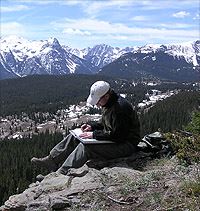Chris' Philosophy on CallingI believe in saying what you mean, and meaning what you say. For game calling, that can be harder than it seems. How do you say what you mean or mean what you say if you don’t know what you’re saying? This becomes even more critical when trying to call in critters with diverse vocabularies, and complex communication. While a lot is still unknown about many aspects of animal communication and their vocalizations, much of it IS known. Each year we head to the field armed with the latest game calls, often pockets or lanyards FULL of ‘em, set out with the intent on doing our best imitations of the sounds made by whatever critter we’re going after. And while we might be able to NAIL that “mew,” “yelp,” or “honk”, if we really think about it, how sure are we that we’re going to use it at the right time, in the right context, and for the right purpose in our calling sequences? Remember, the vocalizations - or “calls” - we make to the animals we’re after are more than just “sounds.” We’re actually TALKING to them, in THEIR language, using THEIR “words.” Just like in human conversation, vocalizations – or “calls” – have meanings, and strung together properly, those meanings relay thoughts, ideas, and feelings. Strung together improperly, well … all sorts of bad things can happen.To the greatest extent possible, I try to maximize my understanding of:
Armed with that knowledge, and to the best of my ability, I strategically pick and choose just the right vocalization for the situation in order to maximize my likelihood of success with each and every calling set-up. Do I always get it right? No, not always. Is it easy? Sometimes it can be. At other times, not so much. BUT, if you strive to UNDERSTAND the vocalizations you use, rather than simply mimicking a particular sound because someone told you to, or because you heard it once while you were hunting, you’ll have a better chance of adapting yourself to the situations you find, rather than simply forcing your calling method upon them and hoping for the best. Purposeful and strategic use of the RIGHT vocalizations, at the RIGHT time, for the RIGHT purpose, translates into more consistent favorable responses to your calling efforts, in a greater variety of situations, and increases your opportunities for filling your tag. Our motto of “Make the Right CallTM” is much more than a catchy phrase; it’s the key to your hunting success.
Want to dive into this concept a bit deeper? Sign Up Now |
Chris' philosophy on calling StrategiesWhile I count myself blessed regarding the opportunities I’ve had so far in life, traditionally I was never one of those people who is able to hunt multiple states every year and take off multiple weeks to go hunting somewhere. For the bulk of my life—and over most of my hunting experience—I was limited to after-school forays a couple of times a season (in Upstate New York and Wisconsin), or maybe a weekend here or there (while in Washington State during the military, or during my early years in Colorado). Excluding the season I spent as an elk guide for a licensed outfitter in 2000 (where I spent a whopping ONE DAY hunting for myself), it wasn’t until I started my own business back in 2001 that I was finally able to starting taking "a whole week off" to go hunting. And like many of you, most of the hunting opportunities I’ve had have been limited to public land, in what folks in Colorado call “Over the Counter” units, meaning that ANYONE can go to a license agent, buy a license, and go hunt.While it’s great that I can do that, and that I can hunt for a variety of species, a LOT of folks in Colorado enjoy that opportunity! If I’m not mistaken, Colorado hosts the greatest number of hunters per acre on public land of any western state. Given these limitations on my time and on the places where I could hunt, I wanted to maximize my success. But running around the hills just calling a lot—while successful from time to time—often ended up with me calling in more hunters than animals. Worse yet, when I got elk or turkeys fired up and bugling or gobbling a bunch—while it was definitely a blast—it also broadcast to the world where the animals were. Ultimately, it ended up putting more hunters in my spots than animals on the ground, with all the extra hunters in my area spooking the very animals I had worked so hard to find. For one reason or another, I’ve always been able to find animals wherever I’ve hunted. Maybe it’s been my background in wildlife biology and my knowledge of habitat. Maybe I’ve just been lucky. In the early years, the trick wasn’t FINDING animals, it was getting one on the GROUND, and a tag filled before all the other hunters found my spots and messed me up. Early on, I started to develop a philosophy that if I could locate an animal, slip in quietly, and work it in a way that WOULDN’T get it fired up to the point of bugling or gobbling too much—if I could simply tell an animal what it needed to hear to come in nice and quietly, or at least QUICKLY—I could fill more tags in less time, without “educating” all the hunters around me.
Using the information and knowledge I gained from elk studies and other learning experiences—which I share in all of the Instructional Videos—I started to perfect my “stealth” philosophy, and gradually came to realize great success. Not only was I filling more elk tags, but I was finding little hidey-holes that were productive, year after year. SCORE!!! To a large extent, the same goes for turkey hunting.Today, I’m committed to the philosophy of using very specific strategies, with highly TARGETED vocalizations, to call in elk with the LEAST amount of calling from ME as WELL as from the animal. While some may construe that as meaning I’m an elk hunter who relies largely upon listening and “spot and stalk”, that isn’t the case at all.
I believe that in MOST cases, elk—properly approached and called to—can be called in for a shot by the SAME person who will do the shooting! I almost always call in my OWN animals for the shot. I’m not stalking or ambushing them, and I’m not relying on a team of friends calling behind me. For turkeys, it's just the same.For other critters—or in cases where the animal I’m calling to is going to be vocalizing a bunch - my philosophy is, “Get ‘em in as fast as you can, and if possible, get ‘em in on the first try!” While that probably sounds like what MOST people want to do, I strive to make sure that whatever set-up I choose, whatever calling sequences I make, and whatever vocalizations I use, they’re TARGETED, and geared specifically toward that end. I take my hunting seriously; on public land, very rarely am I afforded an opportunity to “mess around.” Learn how to Make the Right CallTM every time. Sign Up Now |
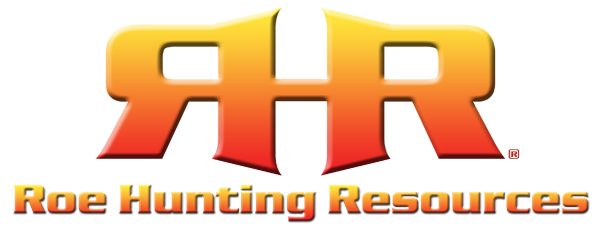

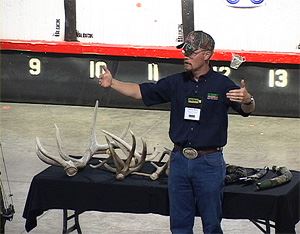 That success, in part, helped me land a position with Primos® Hunting Calls as one of their ProStaffers. As I began to give calling and hunting seminars across Colorado, SE Wyoming, and northern New Mexico, the truly unique material that I taught, how I taught it, and the success of my "students," others came, hungry for the type and level of education I provided.
That success, in part, helped me land a position with Primos® Hunting Calls as one of their ProStaffers. As I began to give calling and hunting seminars across Colorado, SE Wyoming, and northern New Mexico, the truly unique material that I taught, how I taught it, and the success of my "students," others came, hungry for the type and level of education I provided. 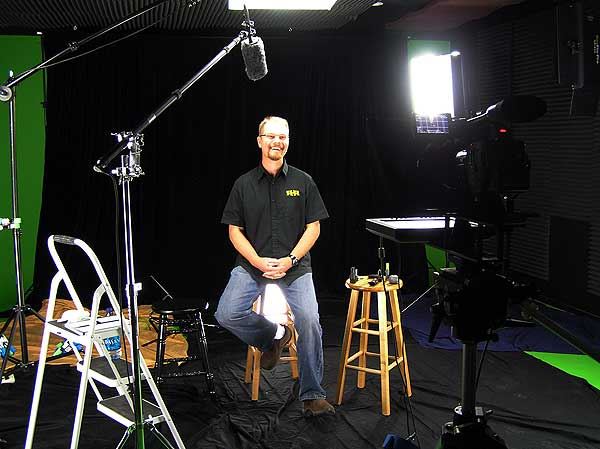
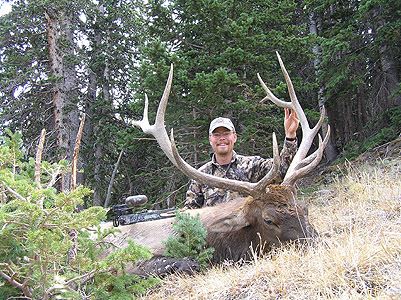 As a hunter, my credentials run even deeper. Starting out as a wide-eyed kid tagging along with my uncles hunting across the farm country of Upstate New York, I have continued to hunt across the country, and credit my passion for wildlife behavior and communication as the basis of most of my success. The only hunting seasons that I missed since those early childhood days were during my assignment in Germany with the U.S. Army. This didn't stop me from taking after-hour jaunts into the German countryside to observe and discover new aspects regarding the behavior of some of that country's most notable big game species: the roebuck, red stag, and wild boar.
As a hunter, my credentials run even deeper. Starting out as a wide-eyed kid tagging along with my uncles hunting across the farm country of Upstate New York, I have continued to hunt across the country, and credit my passion for wildlife behavior and communication as the basis of most of my success. The only hunting seasons that I missed since those early childhood days were during my assignment in Germany with the U.S. Army. This didn't stop me from taking after-hour jaunts into the German countryside to observe and discover new aspects regarding the behavior of some of that country's most notable big game species: the roebuck, red stag, and wild boar. 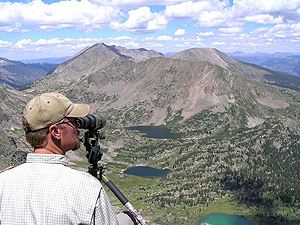 Logging several thousand hours of direct observation of physical interactions between elk—from when they entered their spring calving areas, to just prior to the fall rut—I couldn't help but be exposed to literally THOUSANDS of vocal interactions. Like a sponge, I soaked up every vocalization, interaction—and the result(s) of those vocalizations and interactions—and began to tease out what specific body positions and vocalizations meant, and how the combinations of vocalizations and body language translated into very deliberate and specific elk communication. During the fall of each of those years, I took what I had learned and applied it to my hunting efforts, with great results.
Logging several thousand hours of direct observation of physical interactions between elk—from when they entered their spring calving areas, to just prior to the fall rut—I couldn't help but be exposed to literally THOUSANDS of vocal interactions. Like a sponge, I soaked up every vocalization, interaction—and the result(s) of those vocalizations and interactions—and began to tease out what specific body positions and vocalizations meant, and how the combinations of vocalizations and body language translated into very deliberate and specific elk communication. During the fall of each of those years, I took what I had learned and applied it to my hunting efforts, with great results. 